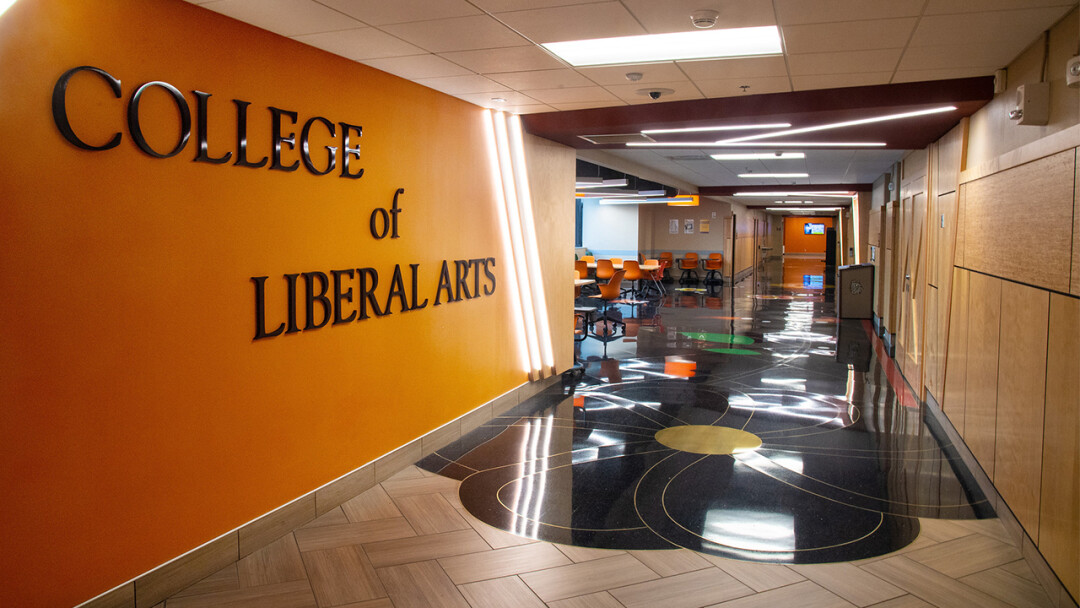Two colleges merge at UMD
Deans see opportunity for interdisciplinary studies and faculty collaboration

There is no doubt that not everyone was pleased to hear of the recent merger of the College of Liberal Arts and School of Fine Arts at the University of Minnesota-Duluth.
“There was the kind of reaction you would expect if you were told your college wasn’t going to exist any longer,” said Jefferson Campbell, Associate College of Liberal Arts Dean.
The decision to merge the two schools was first mentioned to administration in early November, and faculty were informed the following week of the merger and that it was set for July 1, 2020.
Ad hoc committees were formed in January to ease the transition and deal with the many changes the merger would require, including such office basics as internal and external messaging.
Campbell said there were “a lot of very upset people” when the merger was announced, so he and former Dean of Fine Arts Bob Kase served as conduits of information with faculty and students.
“It sort of became my full-time job as COVID hit,” he said.
Yet an even bigger concern loomed.
“Our biggest concern was that the outside world understands the fine arts didn’t go away,” Campbell said.
Jefferson Campbell
“Our programs are still here. This really is in many ways a bureaucratic change, but also the start of an exciting time to be at UMD,” said College of Liberal Arts Dean Jeremy Youde. “The [physical] change might be that the advising office has moved from the third to the first floor.”
“It was primarily a function of trying to strengthen both of the colleges that had existed,” Campbell said in emphasizing the bureaucratic aspect of the merger.
He said while student enrollment had grown by low-single digits in both colleges, the growth was not on par with the three other colleges.
“Both were outnumbered by the other three colleges in terms of student enrollment,” Campbell said. “That was part of the motivation, to create one college on an equal footing with the three other colleges.”
He acknowledges the university will see a savings in salaries with the merger.
“There was an administrative savings to the university,” Campbell said. “They saved a lot of money by eliminating a dean, human resources and an accountant.”
So, what was gained? Both deans agree the merger will offer greater opportunity to present and future students in terms of interdisciplinary studies and faculty collaborations that might never have happened when the two colleges were independent entities. “Even though UMD isn’t a huge institution, it;s large enough you don’t necessarily know what’s happening in other parts of the college,” Youde said. “This is a great chance to build those connections.”
The merger brings together 38 majors (including an interdisciplinary studies major), 33 minors, and three certificate programs.
It is easy to see why some might think the School of Fine Arts had been swallowed whole by the College of Liberal Arts because, for the time being, it is operating under that name, but both deans said each area under the umbrella will remain intact and unaffected by the union.
“The fine arts are still at UMD and are a vital, vibrant part of the university and our connection to the Twin Ports region,” Youde said.
“We are going to change the name of the college. We’re forming a new college,” Campbell said. “It’s referred to as CLA right now, because that’s the administrative unit left, but we’re going to make it a true merger and not an acquisition.”
He said names will be solicited from faculty and a committee will be formed to come up with a new name.
“It will definitely be as democratic as possible, but some folks have real strong ideas already,” Campbell said.
“This is the beginning of the process, not the end of the process,” Youde said. “One of the things were’ going to spend the next 12, 18 months doing is thinking about, what is the identity?” I’m really excited about this because this is a chance to bring together the fine arts and social sciences and humanities together in a single academic unit, all the same majors that existed during the spring semester of 2020 when they were separate colleges. But also bringing these programs together in a single academic unit, it provides the opportunity of co-mingling all these academic disciplines and building something that is truly interdisciplinary. It speaks to the educational interests of students but also what they want to do when they graduate. We see that our students, when they’re going out into the workforce they want to be highly competent in a number of different areas. Already we require they have a second major or a minor. Already there’s an ethos to blend disciplines within the university. Bringing the colleges together will feed that. How do we adapt our teaching to meet a really challenging and ever-changing time, prepare students to be as nimble and resilient and as competent as possible in a crazy kind of environment? It makes for an easier process, and makes it easier for faculty to collaborate, too, and build some unique programs where some of their teaching and research aligns.”

